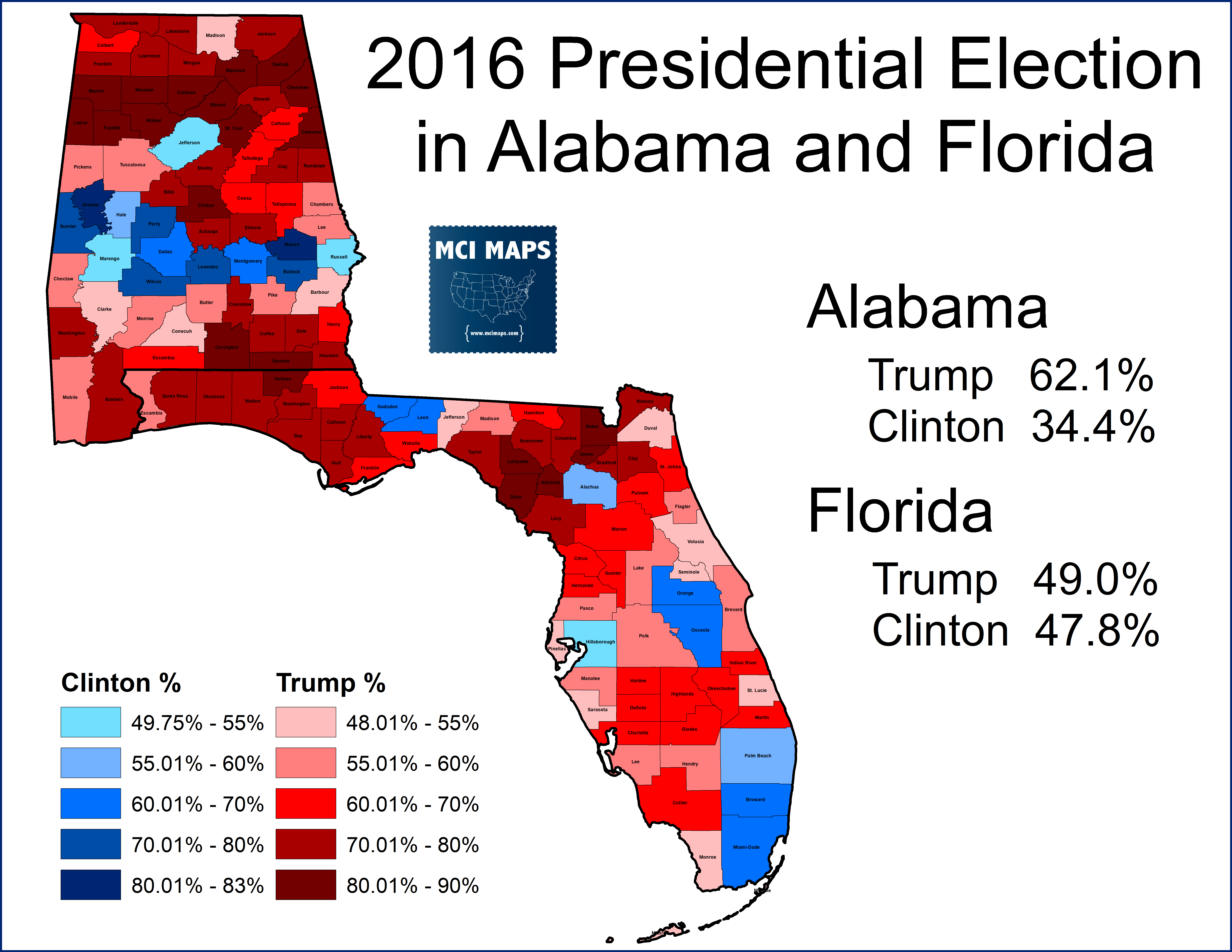Backstory
Last week, reports began to emerge that FL-01 Congressman Matt Gaetz was considering running for Alabama Senate next year. The Senate race will feature Democrat Doug Jones defending his seat after his epic special election win in 2017.

Jones was a very strong candidate but there is no doubt the controversies surround Roy Moore – namely his propositing of teenage girls – aided in a Democratic victory. Jones became the first federal statewide democrat since the 1990s and faces re-election in a state with very strong racially polarized voting and limited elasticity. Jones won not just due to cross-over support from Republicans, but by turnout dynamics that favored African-Americans.

Heading into 2020, a Presidential year where Donald Trump is sure to easily take the state, Jones is in real trouble. The race is rated at best a tossup but more likely Lean GOP. Any non-Moore Republican would be favored in a general election. Several Republicans are eyeing the seat and a few have filed, but word is Donald Trump and his team are not excited about any of them. Trump felt boxed in by Moore’s primary win and the subsequent general election campaign and word is he wants this race to get locked up quick.
And that brings us to Congressman Matt Gaetz. The congressman has been one of Trump’s fiercest defenders in the media and his young and telegenic persona have been commented on by the President. The rumors are Trump’s people think Gaetz would be perfect for the job. Alabama only as a one day residency requirement and Gaetz could easily (from a legal perspective) jump into the race.
So a congressman from one state might run in an entirely different state. This sounds crazy on its face. But looking at the history — and the map — its not as outlandish as some might think.
Alabama and Florida Ties
Modern Florida is a huge population hub with large metro regions and a diverse voting pool. However, North Florida, a region that has seen much more minimal changes over the decades, is often compared to southern states like Alabama and Georgia. The saying in Florida is, you have to go north to go “south.” Outside of key cities like Tallahassee, Pensacola, and some coastal communities, much of North Florida is culturally conservative and rural.
Matt Gaetz represents Florida 1st Congressional district, based entirely in the western panhandle of Florida. It goes right to the Alabama/Florida line and is one of the most Republican seats in the state.
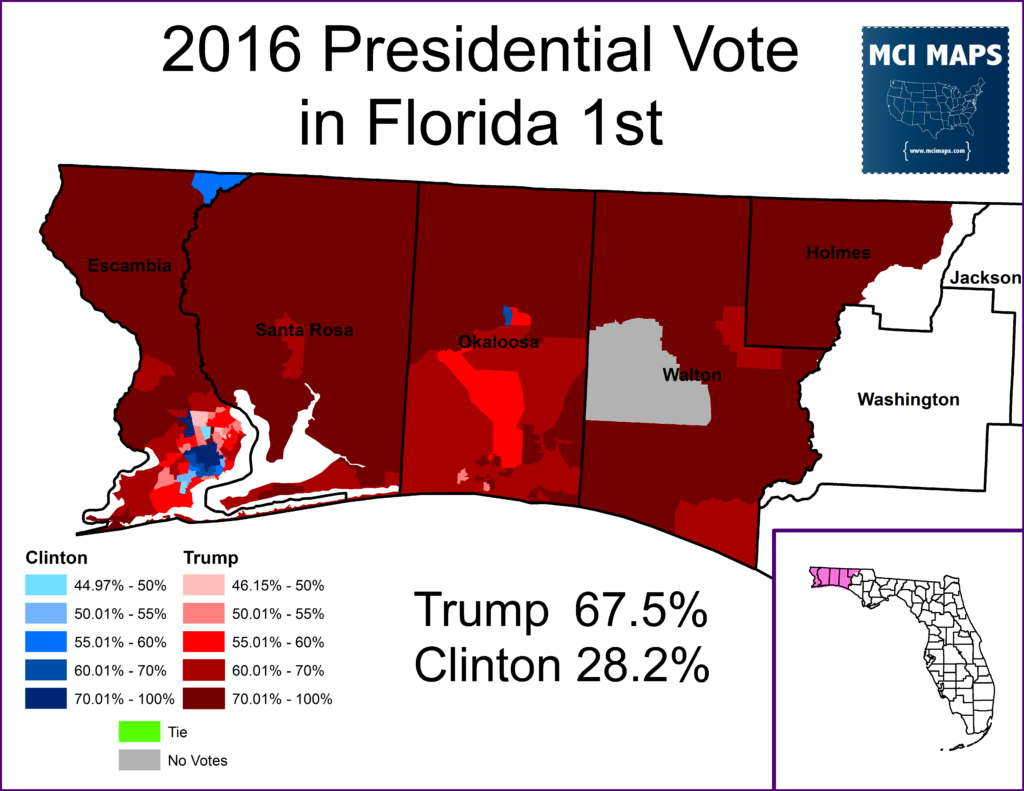
The district shares much of the same media market as Mobile, Alabama as well. Only two FL-01 counties, Walton and Holmes, fall outside the mobile market (and are also the two least populated in the district)
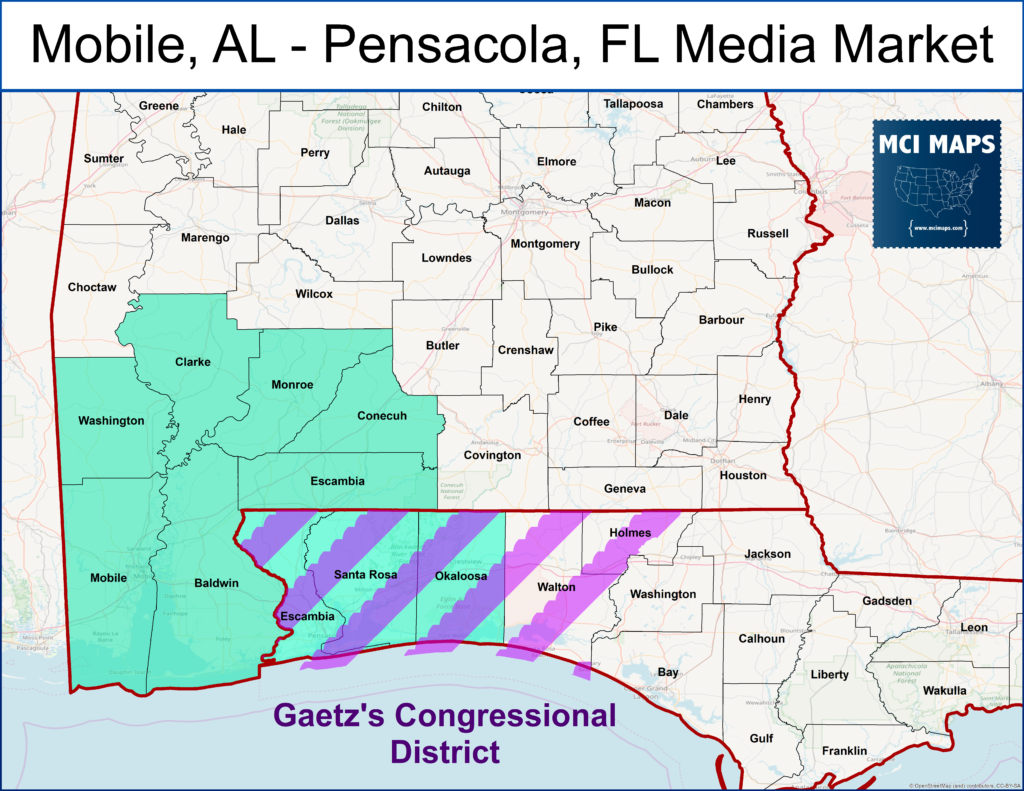
The district also falls entirely within the western time zone, same as Alabama. The time zone sharing is important for the area too. When a Florida bill proposed to unite Florida under one time zone, representatives from the region balked at the proposal. Voters in the region have more interaction with Alabama than they do with most of Florida, and hence had no desire change their clocks.

The time zone debate highlights an important issue – the western panhandle has greater cultural and economic ties to Alabama than to the rest of the state. Interstate commerce is common and voters are exposed to the same commercials. If you lived in Mobile, you saw Matt Gaetz ads for Congress – and if you lived in Pensacola you saw ads from the Alabama Senate race. State borders can get blurry in areas like the western panhandle.
Alabama and Florida Border History
The borders between Alabama and Florida were the subject of many deviations in the years before and after the Revolutionary War. What we now call Florida changed hands many times between Britain, France, and the United Kingdom – with borders altering as a result as well.
Rather than go through every border change, I found five variations that summarize the changes well.
Just before the revolutionary war, Britain had control of Florida. It was divided between East and West, with the divider being the Apalachicola River. West Florida stretched into the Georgia Colony, which at the time went all the way to the Mississippi River. West Florida also went all the way to the Mississippi.

After the war and till 1805, many changes took place. Florida was sold back Spain, with the West Florida portion not going as far North. Georgia’s border was set and a Mississippi territory and Unorganized land sat between it and the recent Louisiana purchase. There was debate, however, over part of West Florida. Spain claimed their portion went to the Mississippi River, while America insisted recent border changes put it on Perdido River.
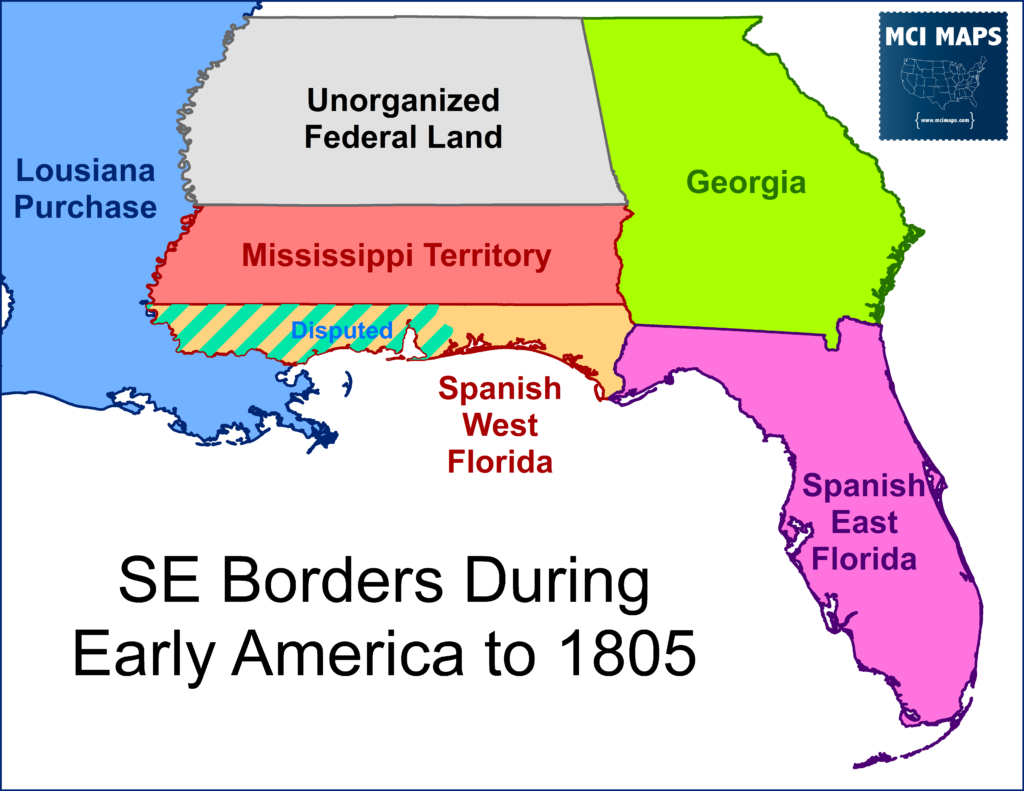
The dispute over the West Florida land continued. An “Orleans Territory” was created, which claimed Spanish West Florida to the Perdido River, while the Mississippi Territory expanded to include both modern Alabama and Mississippi.

The dispute over West Florida settled when America actually sent troops to the area – which caused Spain to quickly back down. The land was proving to be more trouble than it was worth thanks to wars with Natives and disease. America abolished the Orleans Territory and established the state of Louisiana. The disputed land was divided between Mississippi and the Alabama territory; to give both access to the coast.

Finally, in 1819, Florida was purchased from Spain and united as one whole territory. West Florida was simply merged to the Eastern portion. Alabama was made a state but got no extra land from West Florida.
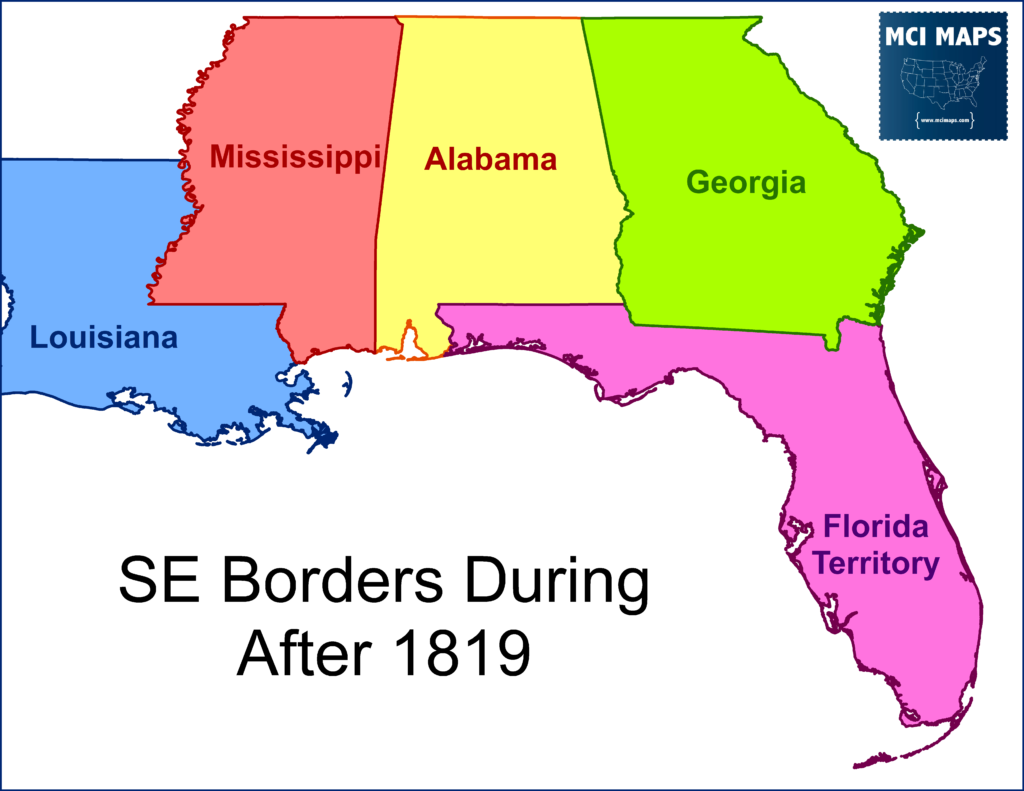
Florida had a major divide between east and west for decades after its union. West Florida and Middle Florida (between the Apalachicola and Suwanee Rivers) were more prosperous at first, while much of east Florida was less developed; with exceptions of coastal towns like St Augustine.
The divide was so pronounced that in the 1837 statehood referendum, East Florida voted strongly against – hoping it could still separate from the rest of the state.
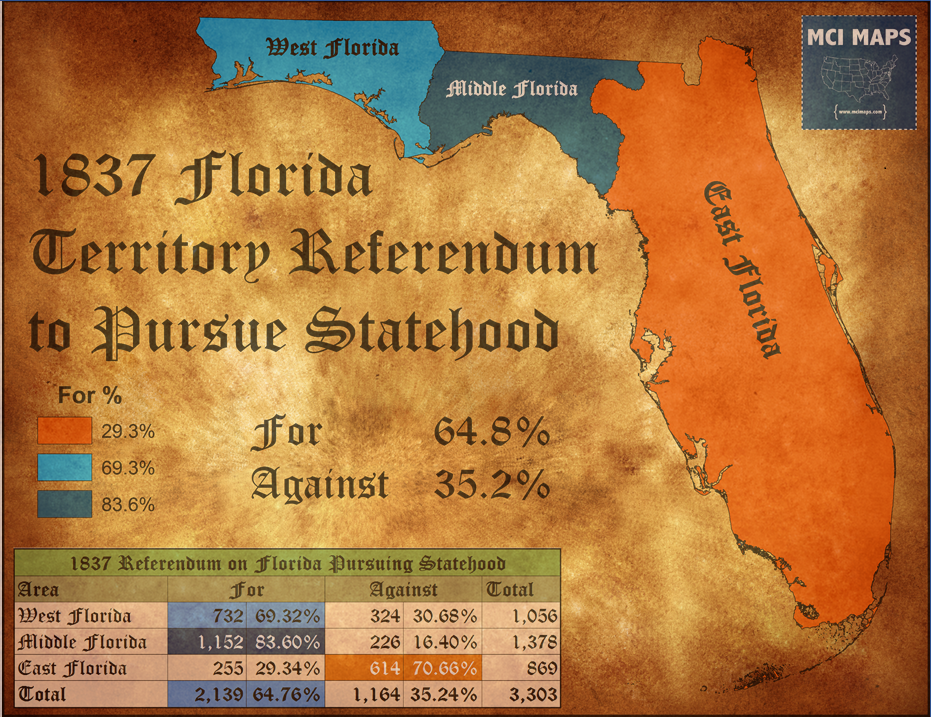
The divide continued for decades. Granted Florida has always had different regional struggles; but the divide between the panhandle and the rest of the state is shown to be something that dates back to the very beginning.
Gaetz’s History
Matt Gaetz was first elected to the state house in the spring of 2010. He won the GOP primary in a special election for a very conservative district that had been vacated when House Speaker Ray Sansom was ousted in a corruption scandal. Gaetz, the son of incumbent State Senator Don Gaetz, defeated Destin Mayor Craig Barker. Two things that propelled Gaetz were his dad’s connections and the fact that Destin was largely outside the district. Most Barker voters in Destin showed up to vote, only to learn they were in a different district. Barker still won Okaloosa County, but Gaetz cleaned up in Santa Rosa, fueling his win.
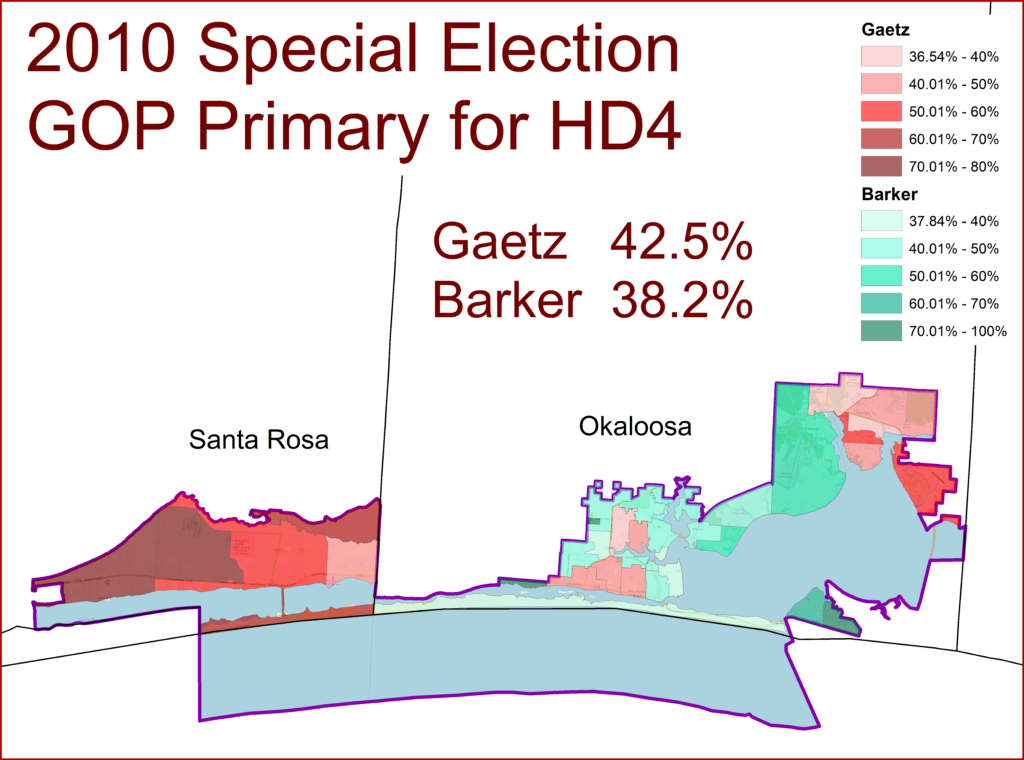
Gaetz had no electoral troubles after his 2010 win. His district was redrawn in 2010 to include just Okaloosaa, but no challengers emerged.
Then, in 2016, Congressman Jeff Miller announced he was retiring. Matt Gaetz was already planning to run for State Senate, but was facing a stronger-than-expected challenge from Bay Commissioner George Gainer. Gaetz promptly switched to the Congressional seat. His name ID propelled him to an easy victory in a crowded field – edging his nearest opponent, State Senator Greg Evers, by 15 points.

Once in Congress, Gaetz gained a reputation as a forceful defender of Donald Trump. The media-savy politician was able to routinely get the news to follow his defenses of the President. This has endeared him to the President. Gaetz was also a major ally of Congressman Ron DeSantis in his Governor campaign.
Gaetz was challenged in the GOP primary by Cris Dosev. The primary wasn’t on clear right vs moderate issues – but rather with Dosev arguing Gaetz cares more about the national spotlight than issues in the district. Gaetz was always the frontrunner but he actually had a weaker-than-expected primary win – just 65%. This was the 2nd weakest primary win of any Florida incumbent Congressperson. Dosev actually won several suburban Republican precincts around the Pensacola coast.

What is notable from that election is that Gaetz’s best showings were in rural portions of the state.
Gaetz’s Future – In Alabama?
Gaetz is an ambitious politician. Everyone who likes him or hates him agrees on that one key fact. He considered a run for Attorney General last year, but held off. He wants statewide office in his future – but Florida is never going to be a sure thing because of how close its elections are. Meanwhile, Alabama is a deep shade of red and better fits the region he comes from.
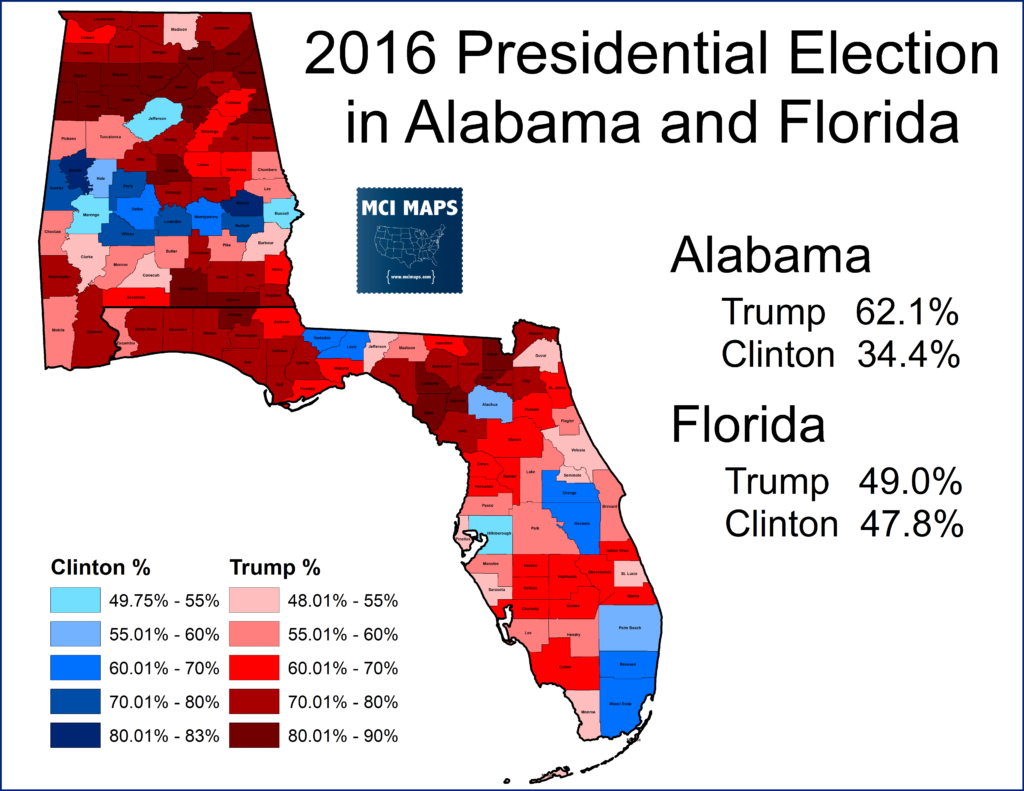
If Gaetz were to make the move, he’d be the first person to go from the US House of one state, to the Senator of another state, with no break – for the first time since the early 1800s. There are two other instances of a politicians going instantly from one state in the House to another state in the Senate – and both have caveats.
John Brown – Was congressman for Virginia then became Senator for Kentucky when KY broke away from VA.
John Holmes – Was congressman for Massachusetts then became Senator for Maine when ME broke away from MA.
Matt Gaetz would make history if he made the jump. For a politician who loves the limelight, its something he should consider. His risks are few both worth considered
- He’d lose his safe seat to make the run
- He’s more liberal on some issues (climate change and pot)
- Can Trump’s GOP popularity override carpetbagger concerns?
The move isn’t full-proof to be sure. But it also isn’t as crazy as it sounds.

